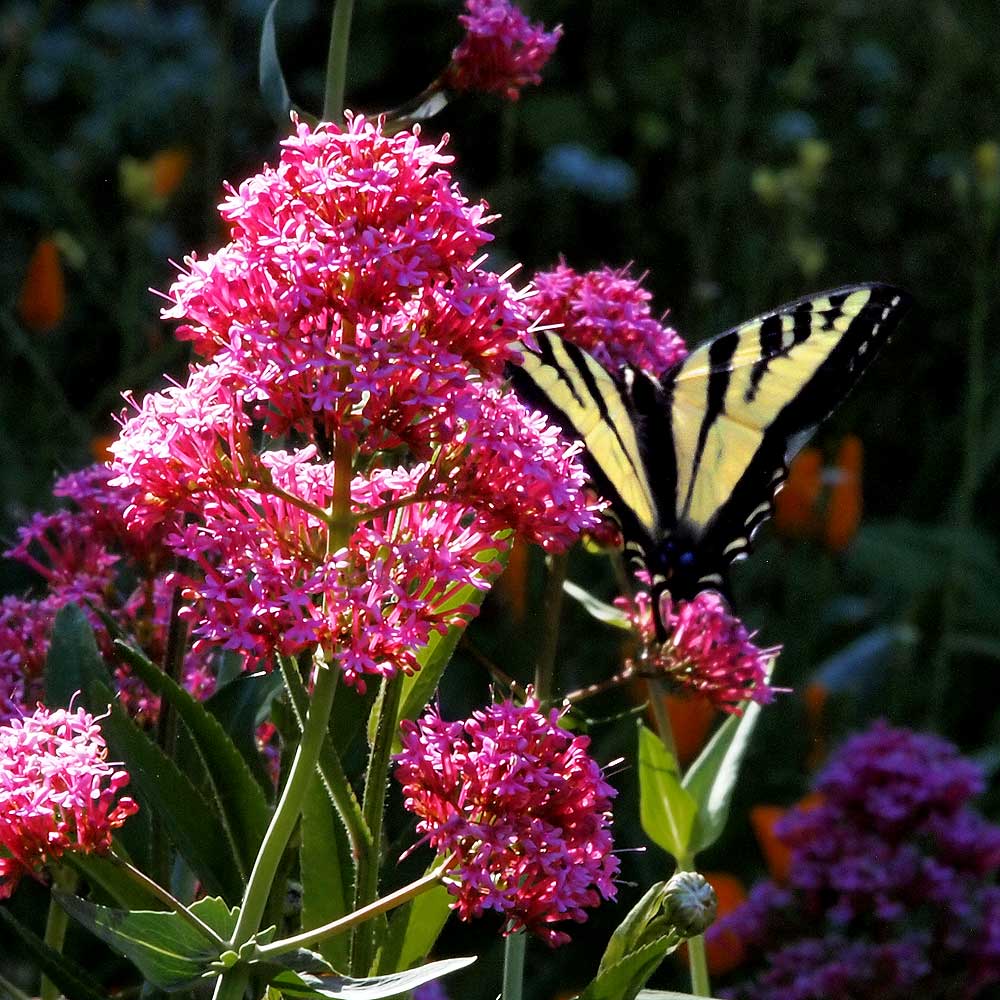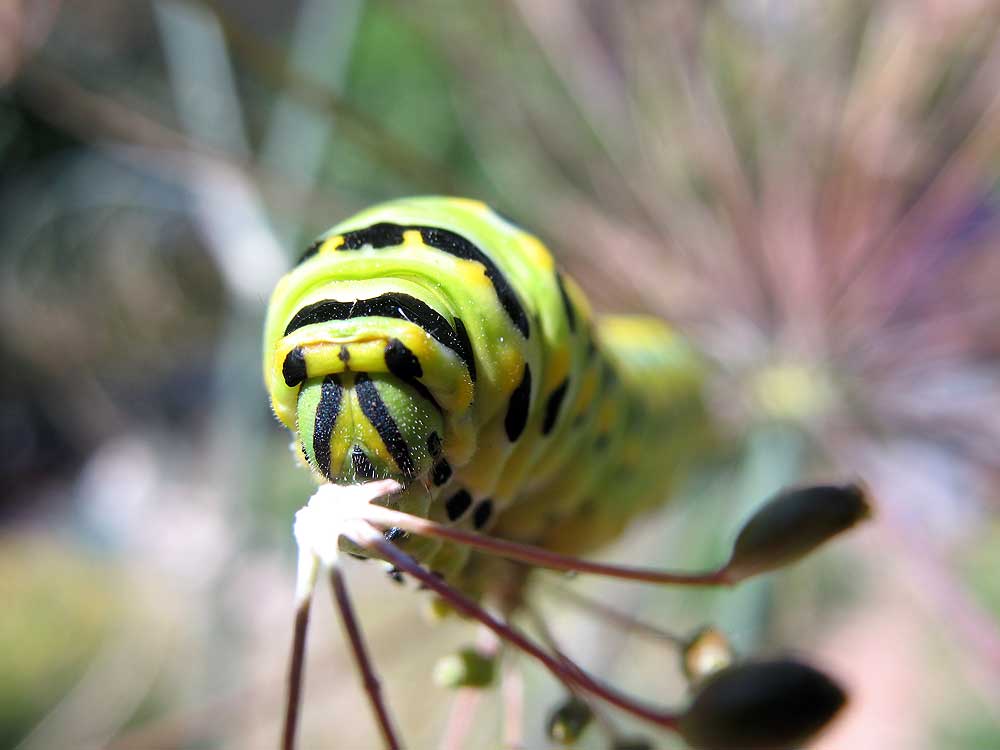
Western Tiger Swallowtail butterfly on Jupiter’s Beard flower.
The Western Tiger Swallowtail butterfly (Papilio rutulus), seen here, is a native of western North America, from the Rockies (and sometimes farther east) to the Pacific and from British Columbia to Baja California. Coastal Northern California, where I live, is one of its favorite habitats. It is a large butterfly, with a wingspan of about three to four inches (females are larger than males). It can be seen flitting about from spring through fall, and occasionally even in winter.
Art Shapiro, professor of Evolution and Ecology at the University of California, Davis, says that “The Western Tiger Swallowtail is basically a species of riparian forest, where it glides majestically back and forth along the watercourse. It has expanded into older urban neighborhoods where several of its host genera are grown as shade trees, and behaves as if the street were a watercourse. In the high country and on the Sierran east slope its usual host is Aspen.”
Butterflies require a host plant on which to lay eggs where young can mature, as well as nectar plants for feeding, and each kind of butterfly has its particular preferences. The Monarch, for example, can only grow on milkweed (Asclepias spp.), and as a result it is threatened by the pervasive use of Roundup, which has, tragically, devastated our wonderful North American milkweed.
The Swallowtails are in the family Papilio. The Anise Swallowtail (Papilio zelicaon) covers much of the same range as the Western Tiger Swallowtail, which prefers a more riparian environment. The Anise Swallowtail is similar in appearance to the Western Tiger Swallowtail, but smaller. It lacks the vertical striping on wing tops of the Western Tiger. (Two other local Swallowtails, quite different from these in appearance, are the Pipevine Swallowtail and Pale Swallowtail — more on them in another post.)
The Swallowtails are impressive as caterpillars. I suspect the caterpillar photos I’m showing here (which I took a few years ago, whereas the image on the Jupiter’s Beard is recent) are of the Anise Swallowtail. (If anyone knows how to distinguish these butterflies’ caterpillars, please let me know in a comment.)

Swallowtail caterpillar.
Western Swallowtails have been quite resourceful about adapting to nonnative plants, so unlike the Monarch they are not threatened. As hosts, the Anise Swallowtail is keen on plants in the Apiaceae family (so long as the plant produces the essential oil anisic aldehyde), such as fennel, dill, parsley, and carrot. A wide range of plants provides nectar.
The Western Tiger Swallowtail hosts on deciduous riparian trees like cottonwoods, ashes, aspens, wild cherries, sycamores, and willows. It enjoys the nectar of many kinds of flowers, including salvia, lobelia, thistle, buckeye, lavender, and zinnia, as well as the Jupiter’s Beard shown above. There is a useful list of California native plants favored by the Western Swallowtail at Mother Nature’s Backyard, and helpful information from Marin County’s Home Ground Habitat Nursery.
Swallowtails, like many butterflies, prefer to get their water from muddy sources, as they benefit from consuming minerals. Males like to patrol from heights for females and swoop down on them when they are perching.
Above a Western Tiger Swallowtail is shown perching on Jupiter’s Beard (Centranthus ruber). I like the combination of the yellow and magenta-red colors. Also known as Red Valerian, Jupiter’s Beard is native to the Mediterranean (including southern Europe, North Africa, and West Asia). Though not a California native, it has become naturalized here after escaping from gardens. It produces abundant light pink to magenta to crimson star-shaped flowers, from spring through fall. The flowers give way to dandelion-like seed heads that are spread by wind (of which we have plenty, as our zone is known for afternoon breezes, and this must be how it ended up in our garden). As a result, the plant is considered invasive in some areas. It likes cool summers, so it is common here in the East Bay of the San Francisco Bay Area, though it is kept somewhat in check by deer, who will gnaw it to the ground.
In closing, let’s listen to Salvador Dalí teaching Rex Harrison how to pronounce “butterfly”:
